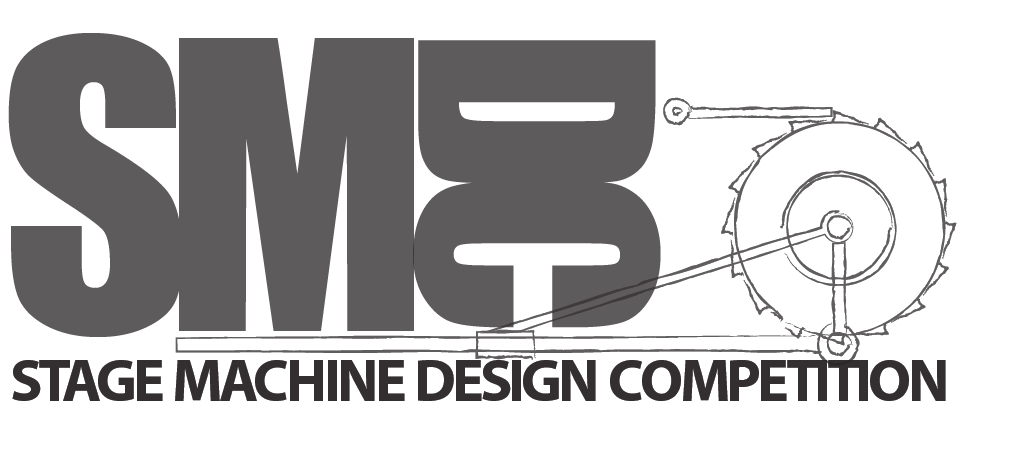

2022 CHALLENGE
2023 COMPETITION SPONSORS

2022 Challenge Description: Clockworks
A major production of All in the Timing is under development and you have been hired to create the mechanism for a “crazy clock” effect that will be installed as part of the set. The production team envisions the “crazy clock” operating at multiple times during the performance—primarily during scene shifts, but potentially at other moments.
The clock itself is comprised of three hands (second, minute, and hour hands) that rotate on separate axes (see drawing). However, the movement of the hour hand should be dependent on the movement of the minute hand; the movement of the minute hand should be dependent on the second hand.
The team envisions two different cues moving the hands of the clock during the performance:
Clock movement 1:
When activated, all three clock hands will move in the clockwise direction (as seen from the audience). For each single revolution of the second hand, the minute hand will move a total of 6 degrees; for each single revolution of the minute hand, the hour hand will move a total of 30 degrees. The second hand should have an angular velocity of 3 revolutions per second. The initial and final positions of the hands do not matter. This movement should last for 1 minute: 180 full revolutions of the second hand, 1 revolution of the minute hand, and 30° of movement of the hour hand.
Clock movement 2:
When activated, the second and hour hands will move in the counterclockwise direction (as seen from the audience); the minute hand will move in the clockwise direction. For each single revolution of the second hand, the minute hand will move a total of 18 degrees; for each single revolution of the minute hand, the hour hand will move a total of 60 degrees. The second hand should have an angular velocity of 1 revolution per second. The initial and final positions of the hands do not matter. This movement should last for 1 minute: 60 full revolutions of the second hand, 3 revolutions of the minute hand, and 60° of movement of the hour hand.
For this challenge, you will design the mechanism behind the “crazy clock” effect.
For the purposes of this challenge:
- You do not need to recreate the artwork on the face of the clock (i.e., the numerals or the spirals).
- The clock hands need to be mechanically driven but not necessarily motorized. Hand-cranked mechanisms are perfectly acceptable. Regardless of whether the actuator is motorized or hand-driven, there can only be one actuator that drives all three hands.
- The scene shifts will be accompanied by music that incorporates ticking noises. However, the mechanism (and any actuators that drive it) should be as quiet as possible.
- During the production, there will be time to make any adjustments to the mechanism necessary to allow for the changes in direction and velocity of the clock hands to happen. During testing of prototypes at the competition, teams will have a total of 20 minutes to demonstrate both movements. The time it takes to make necessary adjustments between each movement will factor into the judges’ scoring.
- All teams will be provided with 1/8″ plywood clock hands after they register for the event.
Download a PDF of this description.